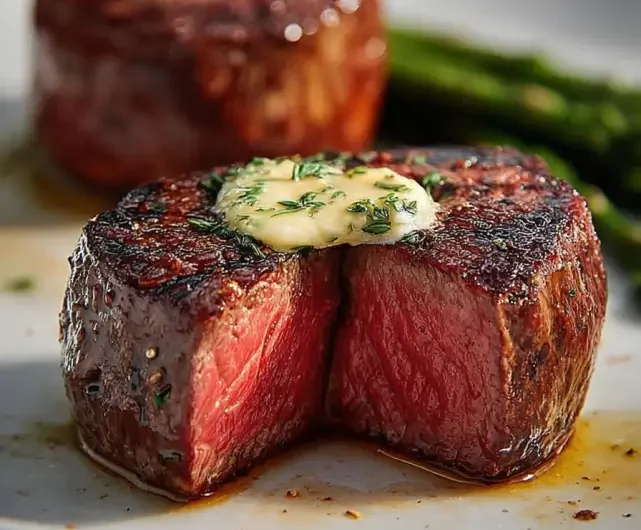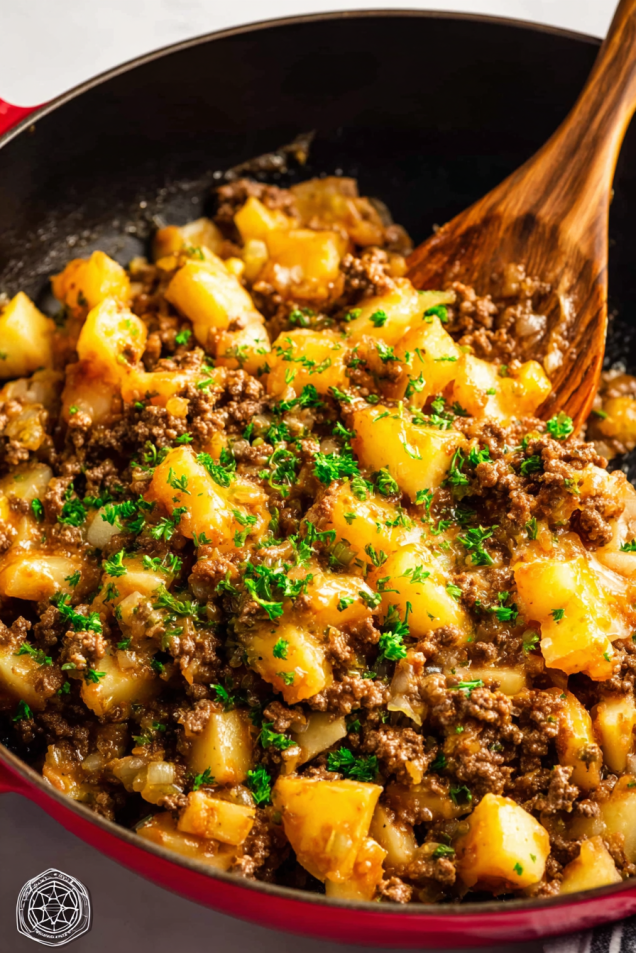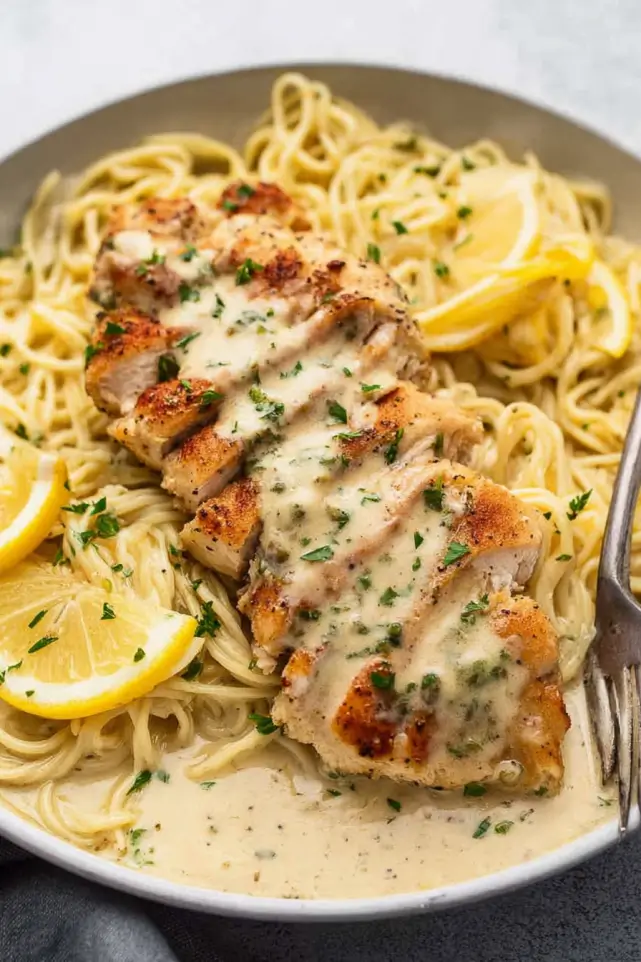I’ll be honest with you: filet mignon used to intimidate the heck out of me. It just sounds fancy, doesn’t it? Like the kind of thing only rich people in movies order with a glass of wine they can’t pronounce. For years, I thought if I tried making it at home, I’d either burn the whole house down or end up chewing a $20 piece of leather.
Spoiler: neither happened. In fact, once I figured it out, I realized filet mignon is one of the easiest “fancy” dinners ever. No tuxedoed waiter needed. No secret steakhouse tricks. Just you, a hot pan, and some butter doing its thing.
So if you’ve been holding back, let me walk you through this like a friend who’s been there, panicked a little, and lived to tell the tale (and eat the steak).

Why This Steak Feels Like a Big Deal
Filet mignon comes from the tenderloin, which is basically the laziest part of the cow. And laziness, in this case, is a blessing—it means the muscle never gets tough. Translation: it’s ridiculously tender. Like, “cut it with the side of your fork” tender.
Sure, it’s leaner than a ribeye, so you won’t get those dramatic fat swirls. But that’s fine. What you do get is a buttery, melt-in-your-mouth bite every single time. It’s the steak you cook when you want to impress your date, your in-laws, or honestly, just yourself because laundry got folded and you’re feeling fancy.
The Steakhouse Secret (That Isn’t Really a Secret)
Here’s the trick: sear first, oven second.
Every steakhouse worth its salt does this. You get that gorgeous golden crust on the outside from a blazing-hot skillet. Then instead of torturing it on the stove until it’s gray and sad, you pop the whole pan in the oven to finish cooking.
And the part nobody tells you? The real magic is in the butter, garlic, and herbs you toss in after the sear. They swirl around the pan like they’re at a little spa retreat, and you spoon them over the steak until it’s basically dripping in flavor. It smells insane. You’ll have neighbors wondering what’s going on in your kitchen.
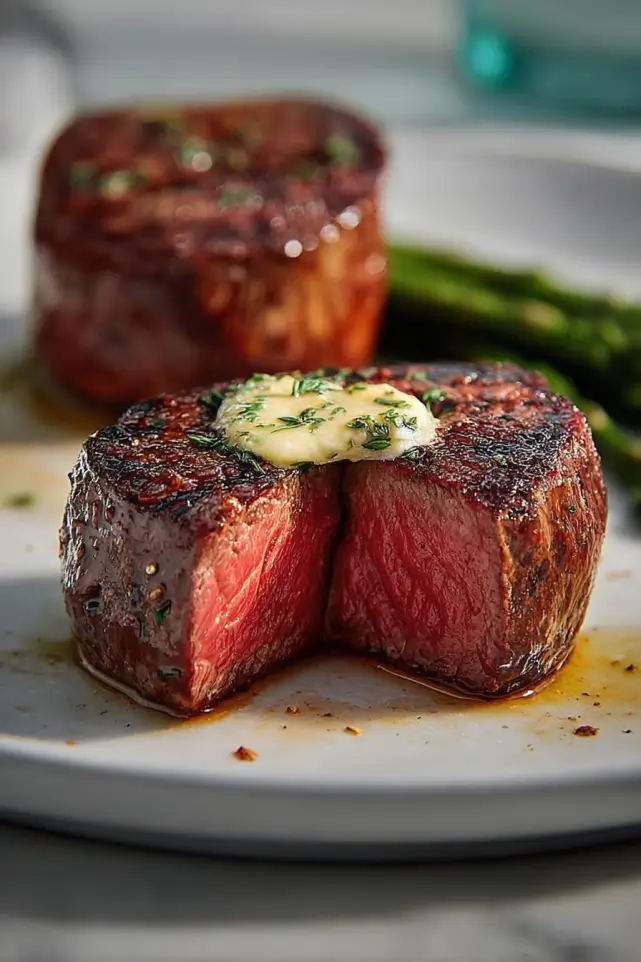
Temperature Talk (Don’t Skip This)
Okay, let’s talk doneness because this is where filet mignon either shines or gets ruined.
Here’s the cheat sheet:
- Rare: 120°F (still mooing, but hey, some people love it)
- Medium-rare: 130°F (juicy perfection)
- Medium: 140°F (still good, but you’re pushing it)
And honestly? Anything more than that… you’re paying steakhouse prices for something that tastes like a beef-flavored eraser.
Pro tip: pull it from the oven 3–4 degrees before your target. It’ll keep cooking as it rests. Yep, steaks are overachievers like that.
Why Resting Matters (Even If You’re Hungry)
I know you want to cut into it right away. Believe me, I’ve been there—standing over the pan with a fork like a gremlin. But resting for 5–7 minutes makes all the difference.
Think of it like this: if you slice too soon, all the juices just run out onto your plate, and you’re basically left with dry steak and steak soup. Letting it rest means the juices settle back in where they belong, so every bite is juicy and tender.
What to Serve With Filet Mignon (a.k.a. The Fun Part)
Okay, sides. Because while filet mignon is the star, it definitely needs some backup dancers.
- Mashed potatoes: obvious, but necessary. Creamy potatoes + garlicky steak drippings = chef’s kiss.
- Roasted asparagus: makes you feel like you’ve balanced out the butter.
- A simple salad: for when you want to pretend this is a “light” dinner.
- Red wine: not optional. (Cabernet or merlot if you want to sound like you know what you’re doing.)
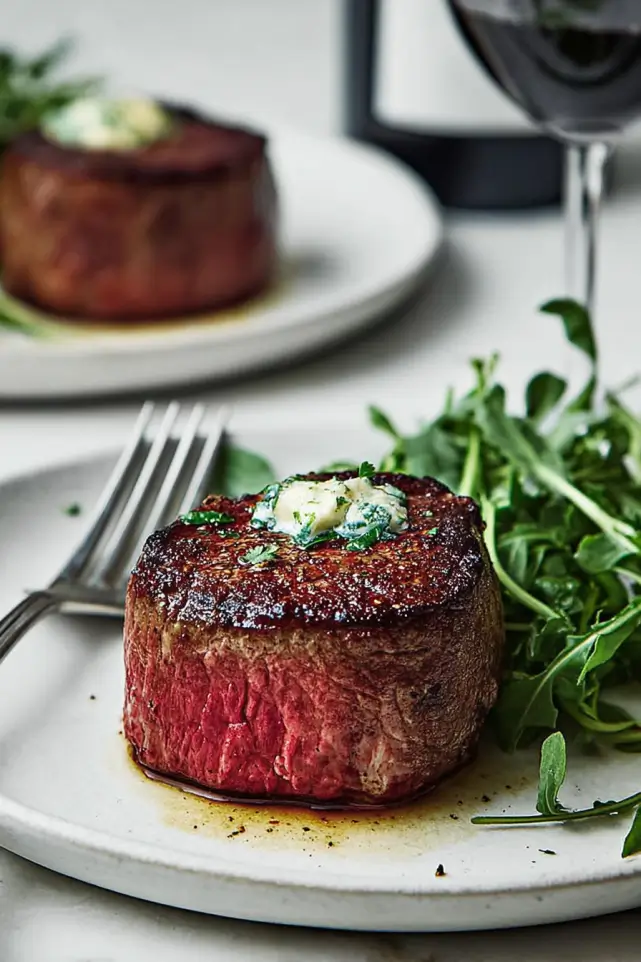
When Should You Make This?
Sure, it’s perfect for Valentine’s Day, anniversaries, or New Year’s Eve. But honestly? Filet mignon doesn’t need an excuse. I’ve made it on random Tuesdays when all I had was half a bottle of wine and the urge to feel like I had my life together.
It’s also fast. From fridge to table in about 30 minutes. Which is wild considering it looks like you’ve been slaving over it all night.
Quick Q&A (Because Someone Always Asks)
Do I need a cast iron skillet?
Yep. Cast iron = restaurant crust. Stainless steel works too. Just don’t even try with nonstick—it won’t survive the heat.
Oil or butter?
Both. Oil gets the sear. Butter gives the flavor. They’re a power couple.
Grill or stove?
Both work. Grilling adds smoky vibes, but you miss out on the butter basting. If you go grill, make a quick garlic butter on the side to drizzle.
Final Thoughts (and a Pep Talk)
Cooking filet mignon at home sounds scary until you do it. Then you realize it’s just a steak that wants a hot pan, a little butter, and a nap. That’s it.
The first time I nailed it, I swear I had a moment of silence for all the overpriced restaurant steaks I’d ever ordered. And honestly? That first bite ruined steakhouses for me. In the best way.
So next time you want to feel fancy—whether it’s for a date, a holiday, or just because you survived a Monday—make this. Light a candle, pour a glass of wine, and enjoy the fact that you just made a restaurant-quality filet mignon in your own kitchen.
Perfect Filet Mignon Recipe | Restaurant-Style Steak at Home
4
servings30
minutes40
minutes300
kcalIngredients
2 filet mignon steaks (6–8 ounces each, about 1 ½–2 inches thick)
1 tablespoon vegetable oil
1 tablespoon unsalted butter
2 cloves garlic, smashed
2–3 sprigs fresh thyme or rosemary
Salt and freshly ground black pepper, to taste
Directions
- Preheat the oven to 400°F (200°C).
- Generously season both sides of the steaks with salt and pepper, pressing the seasoning into the meat.
- Place a cast-iron skillet over medium-high heat until very hot. Add the vegetable oil and swirl to coat the pan.
- Lay the steaks in the skillet and sear without moving them for 2–3 minutes, until a deep golden-brown crust forms.
- Flip the steaks and reduce the heat to medium. Add the butter, smashed garlic cloves, and herb sprigs to the skillet. Tilt the pan slightly and spoon the melted butter and aromatics over the steaks for 2–3 minutes.
- Transfer the skillet to the preheated oven and roast for 3–5 minutes, or until desired doneness is achieved. Check with an instant-read thermometer:
Rare: 120°F
Medium-rare: 130°F
Medium: 140°F - Move the steaks to a plate, cover loosely with foil, and let them rest for 5–7 minutes before serving.
- Serve with garlic butter, A1 steak sauce, or your favorite sides.
Notes
- Room temperature: Remove steaks from the fridge 30–60 minutes before cooking to let them come to room temperature. Pat dry with paper towels before seasoning.
- Don’t overcook: Pull the steaks off the heat 3–4 degrees below your target temperature—they’ll continue cooking as they rest.
- Resting is key: Allowing the meat to rest ensures the juices redistribute, resulting in tender, juicy steak.

